Dry feet may not be a serious medical condition, but they can be itchy, embarrassing and challenging to treat. For seriously dry feet caused by a condition like ichthyosis, a dermatologist can prescribe you a 12 percent ammonium lactate cream. This cream can effectively relieve dryness and flaking as well as keep your feet moisturized. However, it can also increase your skin’s sensitivity; consult your doctor to determine the proper application.
Ingredients
A 12 percent ammonium lactate cream contains 12 percent lactic acid that has been neutralized with ammonium hydroxide. Its other ingredients include cetyl alcohol, glycerin, glyceryl stearate, laureth-4, light mineral oil, magnesium aluminum silicate, methyl and propyl parabens, methylcellulose, PEG-100 stearate, polyoxyl 40 stearate, propylene glycol and water. Lactic acid is an alpha hydroxy acid.
Function
Lactic acid is a normal component of your blood and tissues and, in the form of a cream, it acts as both a keratolytic and a humectant. Keratolytics help your skin get rid of dead cells and stimulates new, healthy cells to form. A humectant, on the other hand, helps your skin’s outer layer retain moisture, and thereby prevents further drying out. The combination of these two agents makes an ammonium lactate cream an effective treatment for dry feet.
Application
Wash your feet with tepid water and a mild cleanser, and dry them thoroughly. Apply the 12 percent ammonium lactate cream generously to any areas of your feet that are dry or flaking. Allow the cream to absorb for five minutes before you begin walking around, or put on cotton socks to help keep the product on your feet. Apply this cream twice a day, or as directed by your doctor, to heal dry skin and keep it moisturized.
Considerations
Ammonium lactate cream causes an increase in your skin’s sensitivity to the sun, and the National Library of Medicine advises that you limit or avoid sun exposure while using this product. Do not use this cream if you have known allergies to any of the ingredients.
Warnings
Do not apply the cream to broken skin, as it can cause your feet to sting or burn. If you experience burning, a rash or any other type of allergic reaction while using this cream, discontinue applying it and see your doctor. Additionally, if you are pregnant or nursing, do not use this cream without first discussing it with your physician.
Related Articles

How to Make Homemade Moisturizing Cream ...

Tazorac Cream & What it Does for Acne

How to Soak Your Feet in Mouthwash
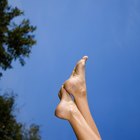
Aquaphor for Dry Feet

How to make a homemade pimple cream

How to Use a Cream With Arginine

How to Use Strivectin SD

How to Get Dark Ankles Lighter
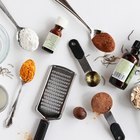
How to Make Your Own Eczema Cream

Calories in a Tablespoon of Cream Cheese

How to Get Smooth & Soft Hands & Feet

How to Apply Dr. Palmer's Fade Cream
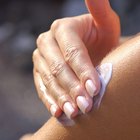
How to Get Rid of Blemishes on the Arm

How to Keep Your Feet From Stinking in ...
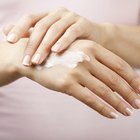
Benefits of Udder Cream

How to Take Care of Wrinkled Hands

How to Make Homemade Cream From Milk in ...

Possible Side Effects of Obagi
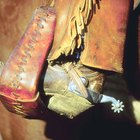
How to Use Apache Boot Cream

How to Make a Soak for a Pedicure
References
Writer Bio
Lynne Sheldon has over 12 years of dance experience, both in studios and performance groups. She is an avid runner and has studied several types of yoga. Sheldon now works as a freelance writer, editor and book reviewer. She holds a Bachelor of Arts in English and art history from Boston University and recently completed her Master of Fine Arts in writing from Pacific University.